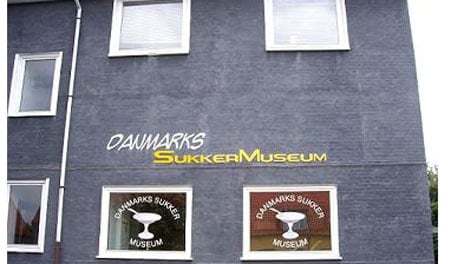
The Danish Sugarmuseum
The museum houses artefacts such as tools from the sugar beet fields, objects, films and photos from the 9 factories that made up one of Denmark's biggest export adventures. It tells the story of the sugar industry, an unknown part of the industrial revolution.
The Danish Sugar Museum tells not only an important piece of local history, but also a sweet piece of Danish history. After Denmark sold the West Indian islands in the Caribbean in 1917, sugar production on Lolland-Falster became very important. The islands are known for their good agricultural land, and sugar beet became the solution to the shortage of sugar cane.
Thousands of tonnes of 'white gold' are still produced every year at the two sugar factories in Nykøbing Falster and Nakskov. Denmark's largest sugar factory is in Nakskov, where the Danish Sugar Museum is also located.
The museum's opening hours for individual visitors can be found on the website.
The Danish Sugar Museum is open to groups by appointment.
If you would like to know more about the Polish beet girls, we recommend a visit to the Polish Barracks in Rødby.